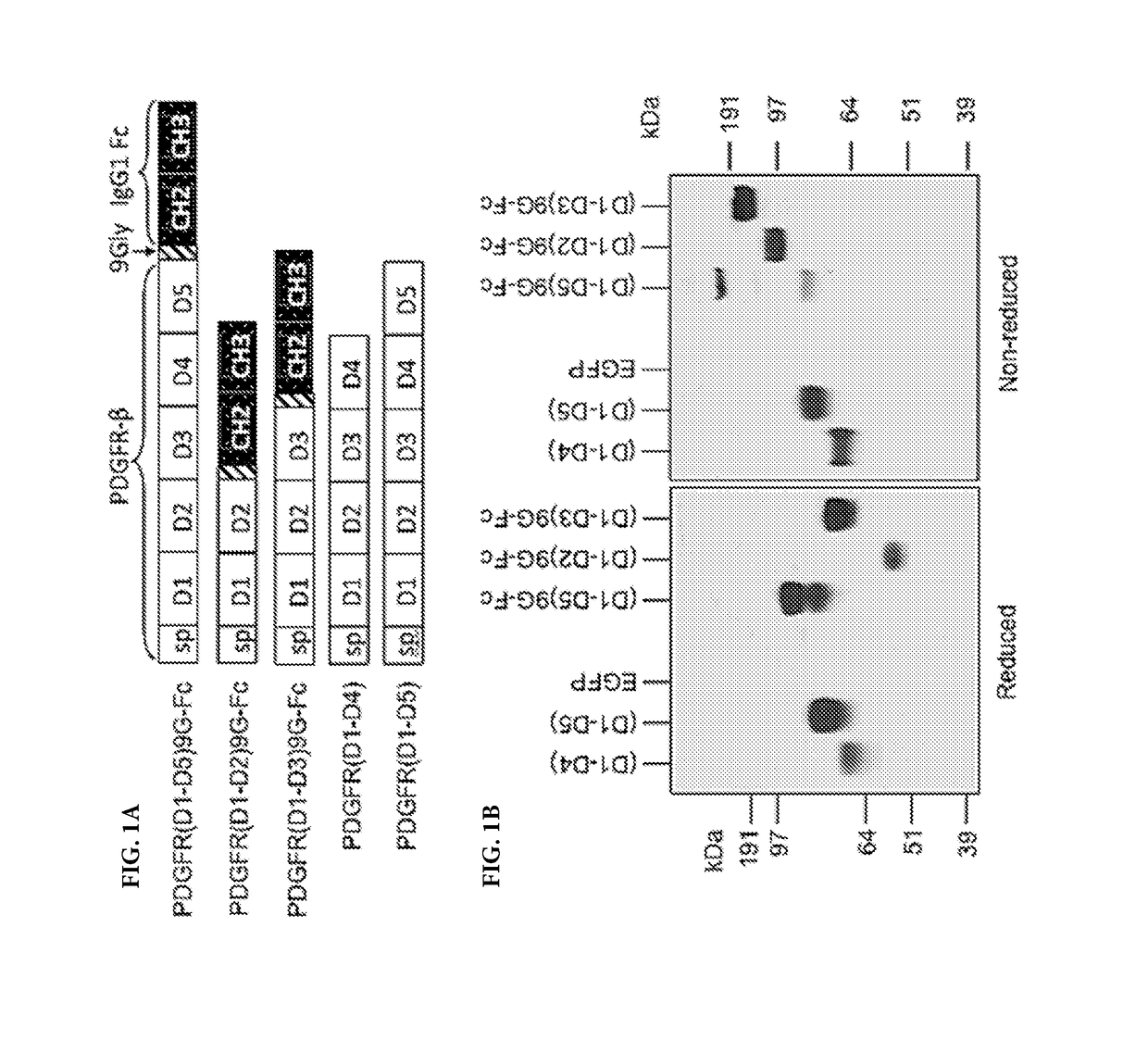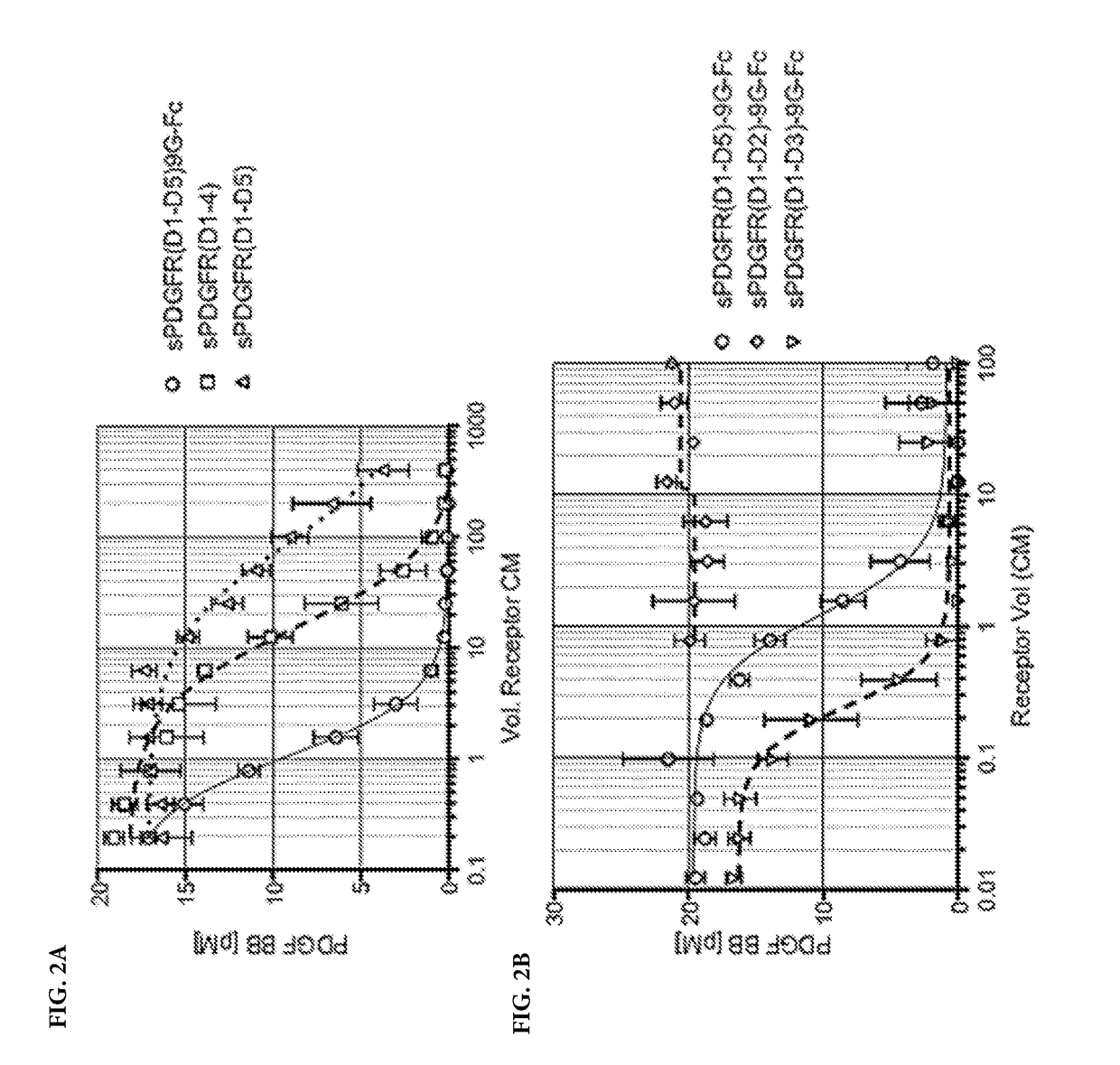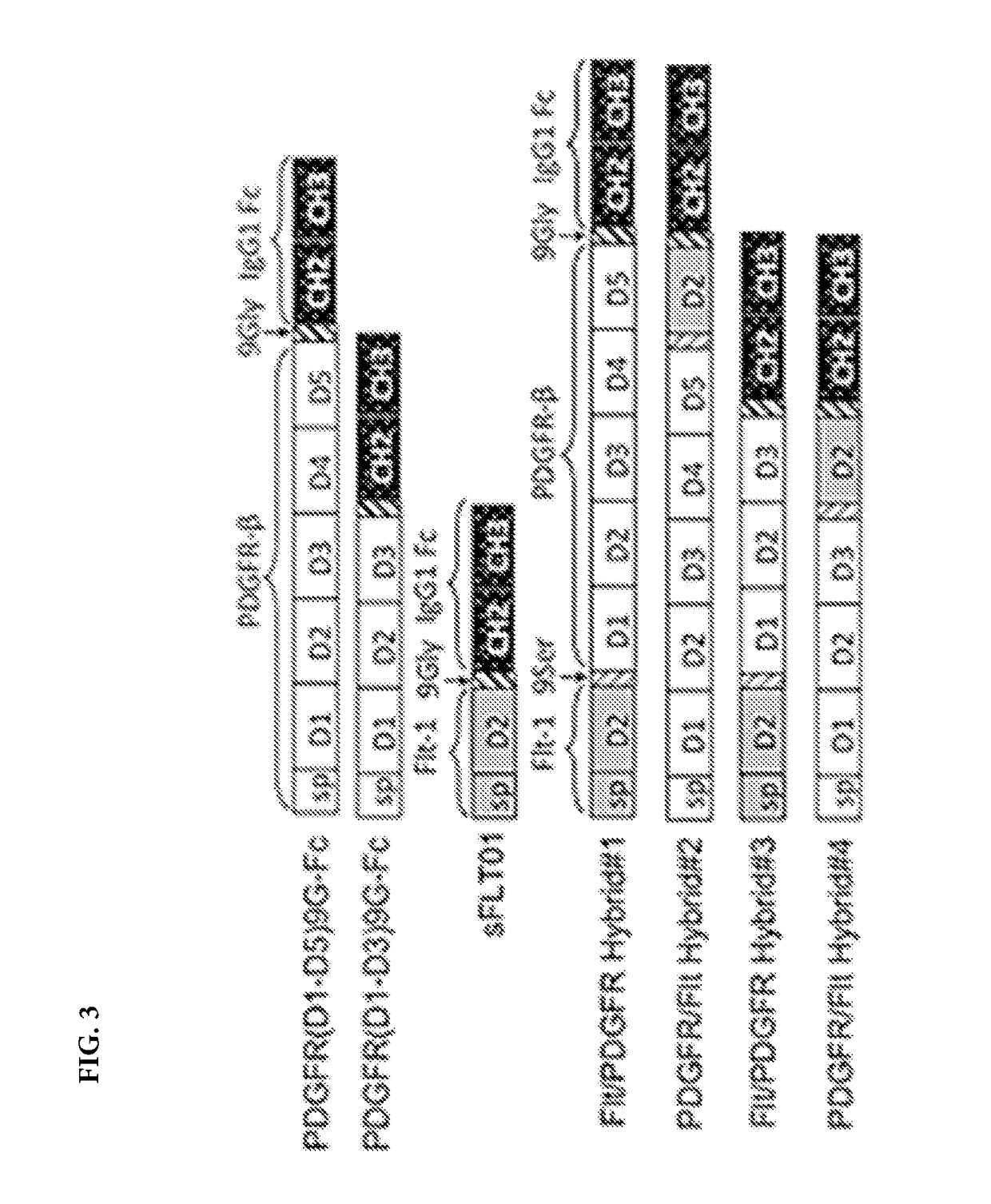Fusion proteins comprising pdgf and VEGF binding portions and methods of using thereof
a technology of fusion proteins and binding portions, which is applied in the field of fusion proteins, can solve problems such as permanent vision loss
- Summary
- Abstract
- Description
- Claims
- Application Information
AI Technical Summary
Benefits of technology
Problems solved by technology
Method used
Image
Examples
example 1
n of sPDGFR-β / Fc Fusion Proteins
[0148]The PDGF-beta receptor (PDGFR-β) ectodomain contains 5 extracellular domains (ECD) numbered 1 to 5 from N-terminus to C-terminus of the protein. The full length PDGFR-β ectodomain was used to generate several truncated soluble PDGFR-β (PDGFR-β) monomeric and dimeric proteins (FIG. 1A).
[0149]Two PDGFR-β monomeric constructs were made that contained a PDGFR-β signal peptide (SP) at the N-terminus of the full length PDGFR-β ectodomain, PDGFR(D1-D5) (SEQ ID NO:7), or at the N-terminus of a PDGFR-β ectodomain containing the first four ECDs, PDGFR(D1-D4) (SEQ ID NO:8). Three PDGFR-β dimeric constructs were produced by fusing all five, first three, or first three domains of the PDGFR-β ectodomain (ECD) to the N-terminus of human immunoglobulin G1 heavy-chain fragment (IgG1 Fc) via a peptide linker consisting of nine glycine residues (9Gly) and were termed PDGFR(D1-D5)9G-Fc (SEQ ID NO:9), PDGFR(D1-D3)9G-Fc (SEQ ID NO:10) and PDGFR(D1-D2)9G-Fc (SEQ ID NO...
example 2
n of Hybrid VEGFR1 / PDGFR-β and PDGFR-β / VEGFR-1 Proteins
[0152]The Flt-1 receptor (VEGFR-1) ectodomain contains 7 extracellular domains (ECD) numbered 1 to 7 from N-terminus to C-terminus of the protein. In order to block both PDGF BB and VEGF ligands, fusion proteins comprising ECDs of PDGFR-β and VEGFR1 were generated and termed hybrid proteins (FIG. 3).
[0153]A previously generated VEGF-binding protein, sFLT01, consisting of ECD 2 of human VEGFR1 linked to a human immunoglobulin G1 heavy-chain fragment (IgG1 Fc) was used to generate DNA constructs encoding the VEGFR1 / PDGFR-β or PDGFR-β / VEGFR1 hybrid proteins. See Pechan P., et al. Gene Ther. (2009), 16:10-16 for a description of the sFLT01 protein, which is incorporated herein by reference in its entirety. VEGFR1 / PDGFR-β Hybrid 1 (SEQ ID NO:12) was constructed by linking a fragment from sFLT01 containing the VEGFR1 signal peptide (SP) and VEGFR1 ECD 2 to the N-terminus of PDGFR-β ECD 1-5 via a peptide linker consisting of nine serin...
example 3
n of HUVEC Proliferation by PDGFR-β / VEGFR1 Hybrid Proteins
[0155]Hybrid PDGFR-β / VEGFR1 proteins were tested for their ability to inhibit VEGF- and / or PDGFR-β-induced proliferation of human umbilical vein endothelial cells (HUVECs). For production of hybrid proteins, 293 cells were transfected with constructs encoding Hybrid 1, Hybrid 2, Hybrid 3, or Hybrid 4 and the cell culture media containing the secreted hybrid proteins was harvested 72 hours after transfection. The harvested cell culture was applied to HUVECs in the presence of VEGF ligand. HUVECs (HUVEC—Cambrex Bio Science Walkersville, Inc) were seeded in a 96 well plate at a density of 2,000 cells / well in Media 199 (Invitrogen) supplemented with 5% Fetal Bovine Serum (Invitrogen) and settled overnight. After incubation, the media was replaced with Media 199 (Invitrogen) supplemented with 5% Fetal Bovine Serum (Invitrogen) containing an equal volume (50) of harvested cell culture generated from three independent receptor or co...
PUM
 Login to View More
Login to View More Abstract
Description
Claims
Application Information
 Login to View More
Login to View More - R&D
- Intellectual Property
- Life Sciences
- Materials
- Tech Scout
- Unparalleled Data Quality
- Higher Quality Content
- 60% Fewer Hallucinations
Browse by: Latest US Patents, China's latest patents, Technical Efficacy Thesaurus, Application Domain, Technology Topic, Popular Technical Reports.
© 2025 PatSnap. All rights reserved.Legal|Privacy policy|Modern Slavery Act Transparency Statement|Sitemap|About US| Contact US: help@patsnap.com



